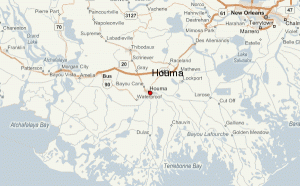Houma: (n. home-a)
This last spring break I was fortunate enough to accompany the SEEDS Project to Louisiana as we explored the issues that plague the state. One of the main themes that we encountered during the trip was the importance of land. Before we had gone to New Orleans, we had stayed in Dulac, a small community that is outside of the proposed levy system that would protect the city of New Orleans from the catastrophes like that of the flooding brought on by Katrina.

The people in Dulac showed great strength and resilience as they face this downhill battle of land loss in the coastal region of Louisiana. However, their optimism and defiance is dwarfed by the visible effects taking change as each year pass. Though the natives have taken several preventative measures such as building their houses on stilts, this small shrimping and fishing town feel the effects of the years of levying (which prevents the Mississippi from depositing sediment).The ground which once stood is slowly sinking into the gulf. The degradation threatens not only the safety of New Orleans but also the inhabitants of those coastal towns. In the past 80 years, almost 2000 miles of the coastline has sunk under the water. We had the privilege to talk with Bob Marshall, a journalist that advocates for the awareness of the threat of climate change is speeding up the process of the land-loss felt in the Bayou. His comments were sobering as they contrasted the optimism that people like Dr. Mike, Mr. Ed, and Danny showed during our days in Dulac.
These are the stuff that nightmares and science fiction films are made off. But they are often portrayed to be located in a distant country. It is a much harder pill to swallow when you realize that the effects of climate change is real and is a reality that some Americans fight today.
http://www.huffingtonpost.com/2014/08/28/louisiana-sea-level-rise_n_5731916.html